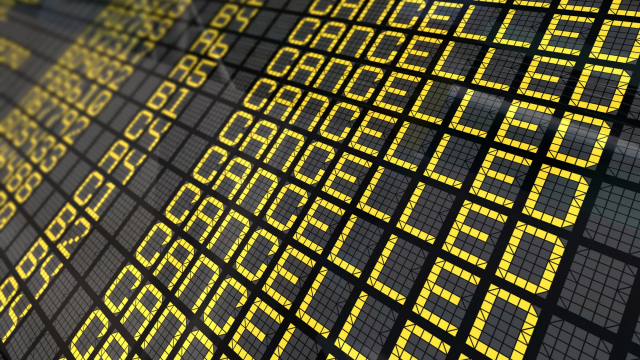A summer of flight disruptions is expected in the U.S. and Europe
2022-06-27
The steady stream of operational disruptions plaguing airlines in the U.S. and Europe as they claw their way out of the pandemic is likely to last through the summer, according to analysts and even some airline officials.
And the bad news for flyers who are already paying high airfares is that the easiest way airlines can alleviate the problem is to further pare back schedules.
“At this point, there’s not a ton of possibilities except for thinning the schedule even more,” said Giacomo Palombo, a partner and airline industry analyst at the consulting firm McKinsey.
High rates of cancellations and delays have been grabbing headlines for nearly a year in the U.S. And the problem has spread to major European cities such as London and Amsterdam as that region began recovering in earnest from the Covid-19 pandemic this spring.
According to data presented by IATA’s regional vice president for Europe, Rafael Schvartzman, during the trade group’s annual general meeting in Qatar this week, 69% of flights arriving in Europe through June 14 this year had at least some delay. Furthermore, the average delay in Europe has already reached the 2019 average, even though air traffic is just 75% restored.
The bad news extends to cancellations, as well. During normal times, Schvartzman explained, the cancellation rate for European commercial flying is approximately 3.5%. But cancellations are running well above 5% currently, and they ticked measurably upward in late May and June.
For flights into, within or out of the U.S., the cancellation rate this year through June 20 was 3%, up from 2% for calendar year 2019, according to FlightAware, despite airlines flying less capacity. The delayed arrival percentage, which the DOT defines as flights that are at least 15 minutes late, sat at 20%, compared to 16% in 2019.
Visible images of frustration
On both sides of the Atlantic, operational snafus garnered plenty of negative press in the third weekend of June, just as airline leaders from around the world gathered in Doha.
In Europe that weekend, a baggage-system meltdown at London Heathrow generated images of piles of suitcases sitting in limbo, which proved popular fodder for TV news broadcasts as well as newspapers.
In the U.S., meanwhile, DOT secretary Pete Buttigieg met with airline leaders on June 16 to discuss disruptions, then reportedly had his own flight canceled the following day.
Between June 17 and 19, U.S. airlines canceled more than 3,000 flights, with Delta, once an industry stalwart for reliability, posting an 8% cancellation rate.
The day after his flight was canceled, Buttigieg told the Associated Press that the DOT could consider taking enforcement action against airlines that don’t meet required standards of customer service should widespread problems occur during the July 4th weekend.
Airlines are frustrated, as well.
“It’s just really a great customer disservice, and we want to get out of this situation as quickly as possible, and we’re working as hard as we possibly can to make sure everything has backups and so on,” United chief commercial officer Andrew Nocella said during an interview at the IATA conference.
But he also said that the problem is largely beyond United’s control. Air traffic control staffing shortfalls, especially in Florida, have created a situation where weather events have bigger impacts on the U.S. aviation system than normal.
“I think we’ve done the best job we possibly can do to match our ability to fly with the schedule we’ve put out there,” Nocella said. “We never want to cancel a flight. It’s as painful for us as the consumer.”
In Doha, IATA officials often downplayed the extent of the operational failures.
“Yes, there are airports that have challenges, and yes, there are airlines that have challenges, but it is not widespread,” said the trade group’s director general, Willie Walsh. “And yes, there are issues that are isolated, but it’s not every day.”
Walsh said that he had flown 57 times this year with only one disruption, which was at Paris Charles de Gaulle Airport, due to a passport-control issue.
To the extent that there are unusual disruption levels, IATA officials said, much of the blame falls with airports for failing to staff up properly and with governments, which clamped back down on air travel during the omicron surge and in the process interrupted efforts by carriers to prepare for the re-emergence of traffic. Slow security vetting processes in some countries are also slowing efforts by airlines to get back to full staffing levels, IATA officials said.
Schvartzman called on airports to proactively inform airlines two weeks in advance if they realize they are going to have staffing shortfalls so that carriers can reduce schedules as needed.
“If we do this collaboration, we understand there will be reductions,” he said. “We understand that we are probably late to be able to overcome this for the summer.”
But others say that all sectors of the air travel industry must shoulder responsibility for operational failings.
“The whole aviation sector is working so closely together that I don’t think you can look at one stakeholder,” said McKinsey partner and analyst Nina Wittkamp.
Courtesy of Travel Weekly

